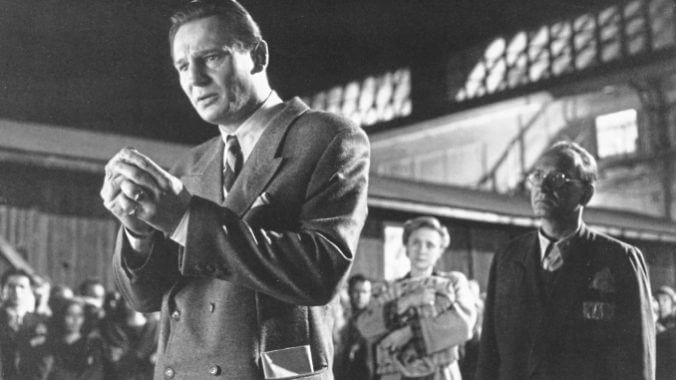
Ranking every Best Picture winner is a bit more apples and oranges than comparing the films in a certain genre, a single filmmaker’s oeuvre, or even a select time period. We’re coming up on 100 years since the first Oscars ceremony, which took place on May 16, 1929, which means it’s almost been a full century since people have been getting mad at what the Academy has deemed the best of the best.
A lot has changed in movies since then, but whether the Academy of Motion Picture Arts and Sciences is calling it “Outstanding Picture,” “Outstanding Production,” “Outstanding Motion Picture,” “Best Motion Picture” or its final and most truncated form, “Best Picture,” the top Oscar has always carried with it the weight of a certain popular historical legacy. The evolving pedigree of that legacy, and the massive changes in the cinematic arts, means that putting all these movies up against each other introduces the kinds of compelling critical friction you see in a greater extent on lists like those generated by the Sight and Sound poll. How do sweeping (racist) epics stand up to smallscale (racist) dramas? Trends of musicals and war movies ebb and flow, while the powers of the studios and the freedom of their filmmakers follow suit. This ranking might not involve the flat-out best movies, but those movies it does involve offer a particularly telling look at how our institutions value films, and what effect that has had on popular moviegoing. With that optimism in mind, we undertake this task.
Our eventual, foolish goal is to rank every single Best Picture winner since the Oscars first began. But to start things off, we’ll focus on the last few decades, giving you an idea of this century’s winners and those of the last century’s final decade. Here, you will find a cross-section of the Academy’s embarrassing tendencies, its consistent predilections and its few, surprising, deviations from the norm. Some of these movies are truly great. Some are so bad you just want to throw out the whole organization and start from scratch. The rest are somewhere in between, time capsules waiting to be discovered (and reassessed) by future cinephiles working through one of the most visible signifiers of Quality Cinema. Judge, argue and find a few to enjoy while the debate around awards merit continues on forever.
Here is every Best Picture winner (since 1990) ranked, worst to best:
34. Green Book

A lot of Best Picture winners get backlashed halfway to hell, and don’t really deserve it. Watching the tides turn on poor, modest little Green Book, I couldn’t help but think: Keep going. An instant entry in the final sweepstakes for most embarrassing Best Picture winner of all time, Green Book finds Peter Farrelly directing the kind of movie whose plain-folks piousness his comedies should be parodying, or at least enacting with a little more comedic zing. In a perfect encapsulation of the movie’s priorities, Mahershala Ali won a Best Supporting Oscar for his co-leading role of pianist Don Shirley, who opens the eyes of racist Italian-American Tony Lip (Viggo Mortensen) when Tony serves as Don’s driver for his concert tour of the 1960s Jim Crow South. The odd couple clashes at first; then a friendship forms, and Tony learns about the evils of discrimination in a racism-is-solved sort of way. That Mortensen and Ali try their best to sell this stuff only makes everything feel worse. As a film about racism (and specifically the “green book” guides for Black tourists traveling through the South), it’s simpleminded. As a buddy comedy film, it’s intermittently amusing and largely wan. As any kind of film at all, it’s sloppily made. And as a Best Picture winner, it’s kind of unforgivable.—Jesse Hassenger
33. A Beautiful Mind
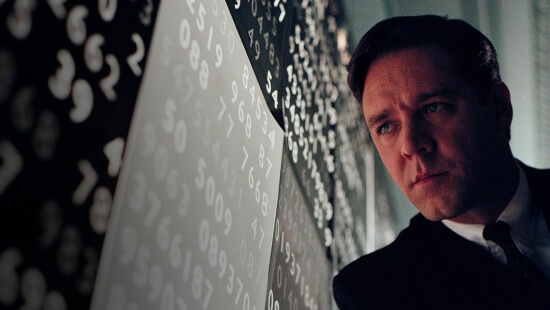
Guys, it’s time for some game theory. Nah, just kidding. Math doesn’t win you Oscars. Ron Howard is far more interested in watered-down, inspirational simplicity: A handsome genius who pulls himself up by the brain bootstraps to overcome his mental illness through sheer force of will. Russell Crowe’s performance as John Nash, Nobel-winning mathematician and paranoid schizophrenic, is the most arresting part of Ron Howard’s by-the-numbers-except-for-the-paranoia drama. He’s got a convincing interiority, a frustrating set of tics for interacting with the world, a long-suffering wife (Jennifer Connelly) whose job it is to fix his schizophrenia if Nash himself wavers, and a movie that sees him as just another box on its Important Movie checklist. A Beautiful Mind is drek, massaged away from the more-interesting truth and assembled just so by screenwriter Akiva Goldsman, coloring carefully inside the biopic template’s lines. Howard luxuriates in the schmaltz, Goldman hacks away and Crowe inexplicably finds humanity inside a movie uninterested in much besides projecting importance. It’s a strategically made movie, awarded at the Oscars and the box office, with nothing more to gain by straying from its choices…hell, maybe A Beautiful Mind understands Nash’s work better than I thought.–Jacob Oller
32. Braveheart
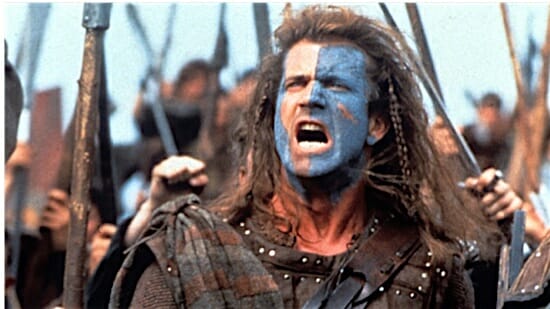
Despite a laundry list of historic “alternative facts,” Mel Gibson’s 1995 Oscar-winning medieval war epic is, unquestionably, one thoroughly stirring cinematic effort. This is due mainly to Scotland itself; John Toll’s cinematography, capturing the lush high and lowlands of the country, is what truly makes Braveheart so memorable—especially juxtaposed against the utter brutality of melee combat. (Gibson is certainly not shy in showing what happens when soldiers take an axe to the gourd.) Story-wise, the liberties taken with the actual events surrounding Scotland’s war for independence do probably make for a more compelling movie—the real William Wallace living in exile in France for years following the Battle of Stirling before his execution would be a tough sell on the big screen. So what that it’s practically an entire fabrication of a real conflict and people? It’s also one hell of an entertaining war movie. —Scott Wold
31. Crash
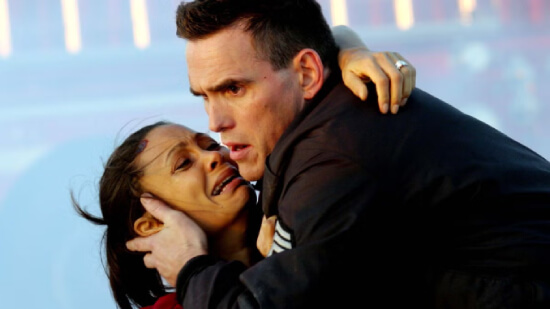
About as subtle as the violent accidents, literal and metaphorical, that give the movie its name, Crash will always be known for becoming the navel-gazing, hopelessly Los Angeles-centric race-relations ensemble drama that a plurality of Oscar voters could see themselves in more readily than Ang Lee’s delicate western romance Brokeback Mountain. But right up until the moment when it turned into an awards contender – whenever that was; awards seasons take forever! – Crash was a well-intentioned, somewhat dopey, sometimes shameless, reasonably compelling melodrama and box office sleeper, with particularly good performances from Sandra Bullock, Don Cheadle, Terrence Howard and Brendan Fraser. The movie’s thorny contradictions behind the scenes might be more complex than the series of interconnected thought experiments presented by the screenplay; it’s unavoidably a movie about race written and directed by white guys, but it’s harder to dismiss that Cheadle also produced it and helped get it made in the first place. On the whole, this is exactly the kind of B-level filmmaking that shouldn’t be elevated by an Oscar win, for its own sake as much as ours.—Jesse Hassenger
30. Chicago
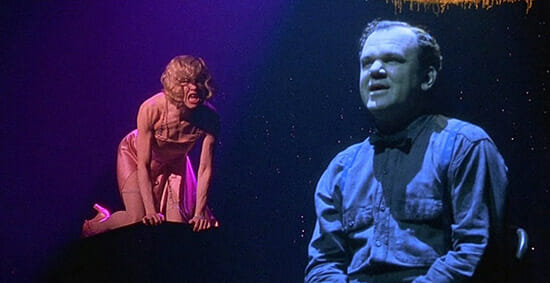
The nine-decade-old satire of the thin line between fame, infamy and exploitation, originally penned by former journalist Maureen Dallas Watkins in 1926, has been adapted a litany of times, perhaps most famously by director Bob Fosse in 1975, with Gwen Verdon as Roxie Hart and Chita Rivera as Velma Kelly. Rob Marshall would then adapt Chicago to the screen in 2002 for a post-OJ Simpson murder trial world, but the question of that particular adaptation as satire either speaks to the triumph of the previous versions of the text or the failure of our own culture to discern between adoration and critique. Marshall’s problem-solving did not involve, so much, a radical approach to the material, but more of a fix for an audience that had grown fairly disenchanted with movie musicals. Chicago’s fix was at once simple and contained a potential for nuance: Marshall’s framework was that the world of Chicago, all of its glittery numbers, were seen through the eyes of Roxie (Renée Zellweger). In scenarios where she is feeling anxiety or fear or distress, the world turns into a stage. But Roxie’s subjectivity is less cynical than Fosse’s—maybe a little naïve, eating up the razzle dazzle, the ingredient that made Fosse’s theme of faking it till you make it most subversive in his work, at face value. Fosse’s Chicago was a damning critique of an American public’s obsession with fame at any cost, of an industry that was keen on taking advantage of people who sought out fame. Marshall’s is less acidic, and with little comment outside of Roxie’s vision to suggest that cynicism. It’s more enamored of the lies of the spectacle than of understanding that spectacle itself was a lie. For a film adaptation that loves artifice in only a lightly critical manner, it makes sense that, though the film is excellent as entertainment, its bite has waned.–Kyle Turner
29. The King’s Speech
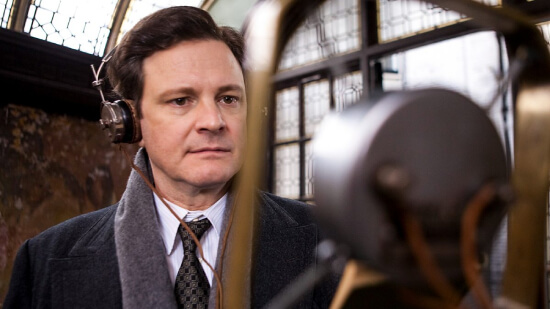
It’s difficult to characterize the British royals without directing attention to the extravagance and spectacle of their novel identity. Beyond the crown jewels and palaces, speculating on the private affairs of the world’s most paraded family stands as the hallmark of their intrigue. However, when Tom Hooper told the story of King George VI in his fight to overcome a stutter upon his ascendance to the throne, he captured a much more candid, human account of the mythologized family. While true to the textbooks, The King’s Speech is not a history lesson, but rather a dramatic character study. The insight into early speech pathology only serves as a conduit to explore the late king’s psyche as he comes to terms with his inherited, yet undesired, newfound power and place in history. Colin Firth’s pensive performance, along with penman David Seidler’s razor-sharp dialogue, humanize the king and manage to add a layer of sweetness to the film’s dreary landscape. –Sage Dunlap
28. American Beauty
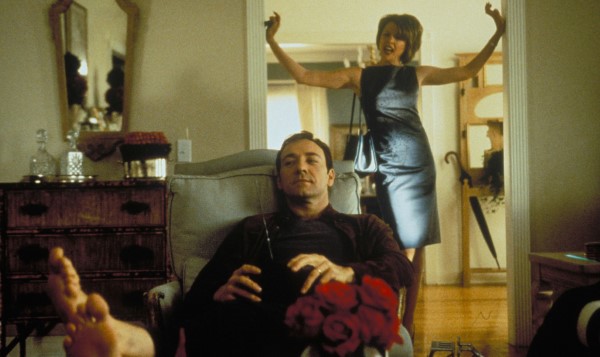
Look, you may not understand: For some young people in 1999, American Beauty winning a bunch of Oscars felt something like a triumph. 1999 is near-universally acknowledged as a great movie year, and people knew it was special at the time; that plus the Academy’s step-behind creakiness meant that there was almost no way a group of five Best Picture nominees would properly represent its deep bench. And wouldn’t you know it, Magnolia, Three Kings, Being John Malkovich, The Matrix, Election, Bringing Out the Dead and The Talented Mr. Ripley were among those left off the list. With The Cider House Rules and The Green Mile repping for the old ways, The Insider directed by an industry veteran, and The Sixth Sense serving as the ambassador for blockbuster entertainment, American Beauty’s darkly comic suburban ennui – written by a gay man (Alan Ball), directed by a first-time filmmaker (Sam Mendes), and thematically congruent with Fight Club, of all things – felt like the best approximation of the dawning New New Hollywood, especially after a decade of winners that were almost all period pieces. (The last fully contemporary-set winner before Beauty was eight years earlier.) Even now, there are moments, scenes and images from this one that linger in the memory, with ace cinematographer Conrad Hall helping to lodge them there, and the performances are uniformly excellent. On one hand, asking Oscar voters to see so far ahead as to understand how some of its satire would curdle, some of its suburban-male-burden depth would turn out to be illusory, and its charismatic star would become a self-aggrandizing predator is probably a tall order. On the other hand, see earlier in this blurb for a ton of big 1999 movies that look a lot sturdier a quarter-century later.—Jesse Hassenger
27. Forrest Gump

Few films infiltrate the collective American psyche quite the way Forrest Gump managed. You’ve undoubtedly heard someone make reference to this 1994 classic—whether it was a classmate sarcastically yelling “Run, Forrest, run!” as you hustled to catch the bus, or someone busting out their best drawl to deliver, “Momma always said life is like a box of chocolates.” The entire film is full of dialogue that’s both moving and funny (my personal favorites include “But Lt. Dan, you ain’t got no legs” and “I’m sorry I had a fight at your Black Panther party”). Forrest may be a simple man, but his story is our nation’s story, and we all are run through the emotional gauntlet as we watch him hang with Elvis and John Lennon, fight in Vietnam and encounter many a civic protest—all while in pursuit of his true love, Jenny. Tom Hanks delivers an Oscar-winning performance, and Gary Sinise is heartbreaking as Lt. Dan. —Bonnie Stiernberg
26. Argo
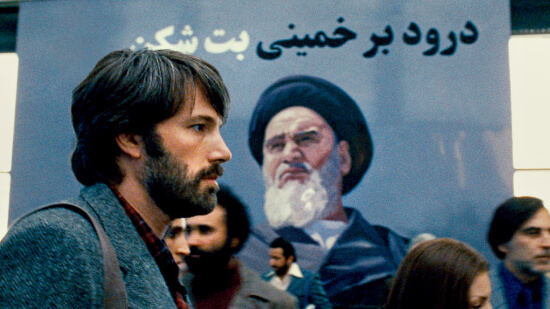
For those people with lingering questions about Ben Affleck’s talents as a filmmaker, Argo should remove any doubt. The actor has now directed a trio of hard-working, blood-pumping dramas—Argo joins Gone Baby Gone and The Town—covering serious subjects like kidnapping and foreign affairs with a vitality that’s too often missing from Hollywood today. Argo, a precise blend of classic narrative genres, is the capper of Affleck’s behind-the-camera work to date, a remarkably well-sculpted film built from a fairly basic, step-by-step framework. Argo looks like a smaller undertaking, plays like a big Hollywood movie and succeeds despite the hundreds of ways it could have failed.—Norm Schrager
25. CODA

This is a nice movie. If the Oscars were confined entirely to the sphere of made-for-cable features, CODA would make a perfectly fine winner – and, hey, for the 94th Academy Awards, which honored films from most of 2021 after the pandemic wrecked up 2020, we weren’t too far off from living in that TV-only world. So maybe it’s understandable that the voters went with a comfort watch during a bounce-back year. Emilia Jones gives a steady performance as Ruby, the only hearing member of a Deaf family, torn between her family’s needs and her desire to pursue singing (the title refers to both a musical coda and her status as “child of deaf adults”). Troy Kotsur won a Supporting Actor Oscar for his role as Ruby’s earthy father, and the movie tells its bittersweet story with economy, grace, and what you might call a tasteful helping of teenager-with-a-dream clichés. What it really lacks is any discernible cinematic style; truly, this is shot with the brand crispness of a streaming-era movie never meant for theaters (even if its crowd-pleasing bona fides would have likely kept it in your local arthouse for weeks or months if it had come out a decade earlier). Though it beat out a number of terrific and worthy films, CODA won’t necessarily stand as one of Oscar history’s greatest wrongs, in large part because it’s hard to imagine anyone further off in the future remembering that it exists.—Jesse Hassenger
24. The Artist
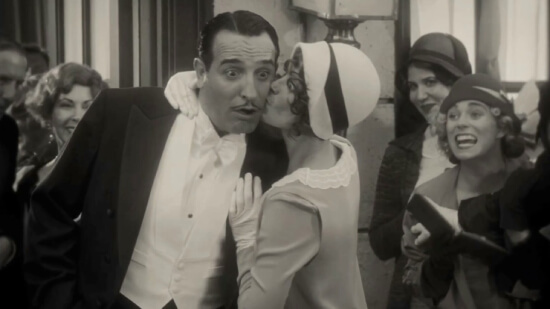
In his black-and-white ode to the Golden Age of Hollywood, Gallic writer-director Michael Hazanavicius honors form as well as content, packaging his romantic melodrama about the rise of a new ingénue and the fall of a silent movie star in 1920s and ’30s Los Angeles in luxurious black, white, and shades of shimmering silver. George is a Douglas Fairbanks-grade celebrity, utterly charming both on-screen and off, especially with his sidekick Jack Russell terrier at his side. Classically handsome and a gifted physical comic, Jean Dujardin is enchanting in the role, as seductive to 21st-century audiences as to his character’s screaming fans. His seemingly fail-safe success hits a snag, however, with the advent of talkies, a development that ushers in a new generation of talent. Speaking of which, at the height of his powers, George crosses paths with Peppy Miller (Bérénice Bejo, who is married to Hazanavicius), a movie extra whose career takes off just as his begins to tank. And peppy she is, with her cocked hip, flirtatious wink and spunky gestures. As lovely as she is lively, Bejo demonstrates unexpected depths to her perky character when, alone in George’s dressing room, she slips one arm into his tuxedo jacket and pretends she’s in a lover’s embrace—a bit of business that only could have resonated in a silent film. With no dialogue and few intertitles to convey plot, Hazanavicius and cinematographer Guillaume Schiffman have taken special care with the geometry of their images; there’s something delightful to look at in every scene. —Annlee Ellingson
23. Dances with Wolves
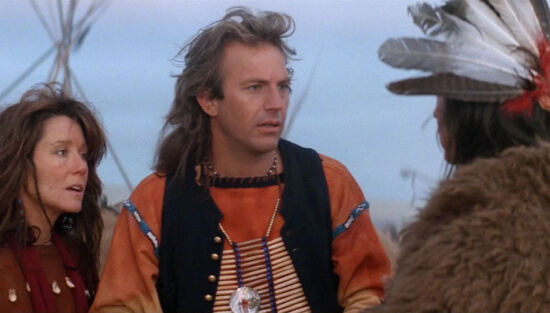
How odd and sort of delightful that the biggest-ever decade for westerns at the Oscars was the 1990s, which kicked off with Dances with Wolves winning big, followed two years later by Unforgiven, meaning that two-thirds of the genre’s Best Picture wins happened decades after its heyday (and the other one, Cimarron, arrived significantly before it). Unforgiven never suffered an appreciable backlash, but Dances with Wolves and Kevin Costner were unlucky enough to beat Goodfellas and Martin Scorsese, resulting in a boomerang effect: Though Dances was a massive hit at the time, it quickly became shorthand for the shortsighted stodginess of the Academy Awards, only to have some folks turn around on it later and appreciate its craft on its own terms. Though it has those classic epic trappings of many ’80s and ’90s Best Pictures, there is something fascinating about the way Dances with Wolves blends Costner’s old-fashioned western-spaces filmmaking with a story that emphasizes sensitivity and understanding (however clumsily!) over action-adventure conflict. As much as the story of a Civil War soldier (Costner) going native with a Lakota tribe feels classical in form, it’s really a movie out of time, in the sense that it was an outlier then and, for better or worse, still feels like one now. At three hours, it’s not exactly a brisk sit – making extended running times fly by is one area among many where Scorsese has it all over Costner – but fans of Costner, the genre, or Dean Semler cinematography will find it essential.—Jesse Hassenger
22. The English Patient
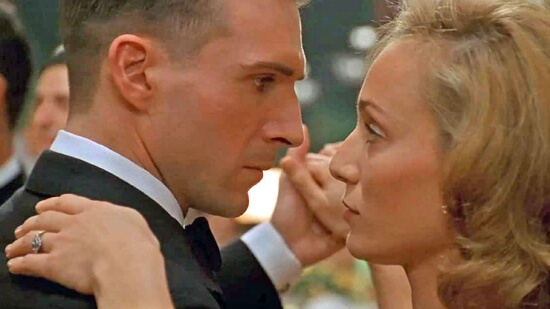
It wasn’t just Elaine Benes who thought that The English Patient was overrated and boring: Even at the time of its Oscar win, this period romantic epic was being criticized in some quarters for its self-consciously old-school sweep. To which its fans say, “Yeah, so?” A stellar “They don’t make ’em like this anymore” movie, filmmaker Anthony Minghella’s adaptation of Michael Ondaatje’s novel starred Ralph Fiennes and Kristin Scott Thomas as the most poignantly star-crossed big-screen lovers since Ilsa walked back into Rick’s life. Beautifully shot, sensitively acted, romantically overpowering, The English Patient is way, way better than Sack Lunch.—Tim Grierson
21. Everything Everywhere All At Once
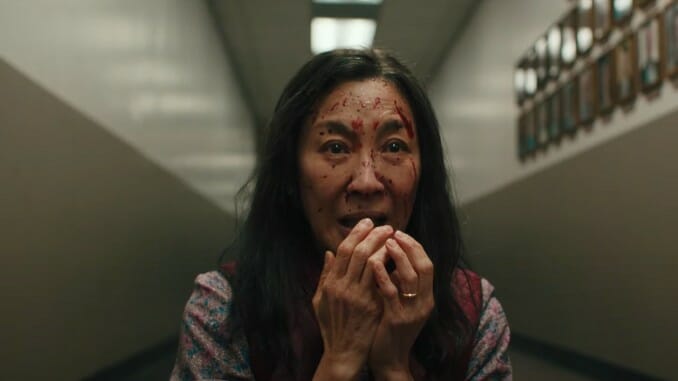
Everything Everywhere All At Once follows Evelyn Wang (Michelle Yeoh), a jaded, middle-aged laundromat owner who may or may not be involved in some minor tax fraud. Her tedious, repetitive life is thrown into total pandemonium, however, when her husband, Waymond (Ke Huy Quan)–or at least a version of him—alerts her to the existence of the multiverse on the elevator ride to an IRS meeting. He then explains that a powerful villain named Jobu Tupaki is in the process of constructing a universe-destroying force that only Evelyn has the ability to stop. And so Evelyn reluctantly plunges headfirst into the multiverse. The facts: There are an infinite number of universes that exist simultaneously, containing just about anything you could possibly imagine. The rules: To acquire different skills, you must picture a universe in which you inhabit that skill, whether it be inhumanly strong pinky fingers or a mastery of knife-fighting. (If you can think it up, it exists.) What follows, then, are roughly 140 frenetic minutes filled to the brim with dense, complex science, colorful setpieces and scenes that feel like they’ve been pulled straight out of dreams far too abstract to describe. As you can probably gather, Everything is not dissimilar to its title—and a lot to wrap your head around. If all this sounds intimidating (which, let’s be honest, how could it not?), rest assured that Everything is grounded by an effortlessly simple emotional throughline. Indeed, the film contains as much emotional maturity as it does cool concepts and ostentatious images (yes, including a giant butt plug and raccoon chef). At its core, it is a story about love and family, carried by the dazzling Yeoh in a subtle and unsentimental performance. Where Everything’s emotional throughline is Evelyn’s relationship with her family, its visual thread manifests as a series of hypnotic, vertiginous action sequences, choreographed like a ballet by Andy and Brian Le. As a bonus, these sequences recall Yeoh’s iconic role in Ang Lee’s wuxia film Crouching Tiger, Hidden Dragon. The directors do not shy away from the use of dizzying flashing lights, or rapidly shifting light sources that disorient the viewer. They also aren’t afraid to implement over-the-top images, like a person’s head exploding into confetti or a butt-naked man flying in slow-motion toward the camera. At the same time, movement between ‘verses feels seamless through Paul Rogers’ meticulous editing, as does the effortless fashion in which different aspect ratios melt into one another. If Everything Everywhere All at Once can be boiled down to one, simple question, it would be reflexive of its own title: Can you really have everything everywhere all at once? Whatever the characters’ answers end up being (I’ll let you discover that on your own), I am certain that the Daniels would say yes, of course you can.–Aurora Amidon
20. Gladiator
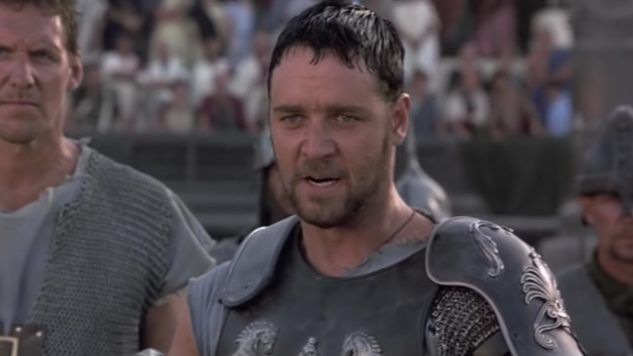
Ridley Scott’s filmography contains two of the most unforgettable 20th century filmmaking feats in Blade Runner and Alien, which both entirely reshaped how an entire genre—not just within film, but everywhere—visualized certain types of stories. Yet, if you want to look at the work audiences have rewarded with box office numbers and that his peers in the film industry have recognized with awards, Gladiator is hands down his most critically and commercially successful work. The sword-and-sandal blockbuster is not his best film and nowhere near his most influential one, not by a catapult-assisted long shot. But damned if it isn’t his most watchable, most quotable, and most fun. Set near what historians mark as the end of the Pax Romana, it depicts an extremely fictionalized version of the end of the reign of Marcus Aurelius and the succession (and eventual assassination) of his son, Commodus (a gaunt and crazy Joaquin Phoenix in the movie). Opening on an icy, desaturated Germany, we join Maximus (Russell Crowe), a general in the Roman army who is very, very loosely based on real-life historical figure Marcus Nonius Macrinus. Maximus is a gruff, growling, utilitarian sort who thinks only of finishing his brutal colonial conquest and then returning to his idyllic farm where his perfect wife and son await the obvious tragic death that is totally about to befall them. After Maximus crushes the last vestige of local resistance, the Emperor Marcus Aurelius (Richard Harris, looking much older than the man who historically died at 58) asks Maximus to become emperor rather than allowing the title to pass to his twisted son, who’s already giving off incest vibes with his sister, Lucilla (Connie Nielsen). Despite being very good at bossing folks, Maximus just wants to go home, and Commodus treats this passing over as the last straw. In a whirlwind, Commodus kills his father and sends his men to kill Maximus. Maximus finds himself sold into slavery, where his master quickly learns he’s the best gladiator around. To gin up local support for himself, Commodus opens the coliseum, and suddenly discovers that the man he tried to kill is the number one star. The premise of the movie is completely nuts when you write it out that way, but despite that and the movie’s two-and-a-half-hour runtime, Gladiator feels fleet and simple. Gladiator stood out at the time in that it was a human-scale story that, thanks to a lot of digital correction, looked like a heightened, epic version of reality, much as The Lord of the Rings movies would in the years immediately following. It’s lavishly composed, written to give every actor down to the bit players no fewer than one memorable character beat, and its utter lack of subtlety makes it extremely easy to understand. On the former two points, it is very much in keeping with Scott’s filmography—on the latter, it is a departure.–Kenneth Lowe
19. The Shape of Water
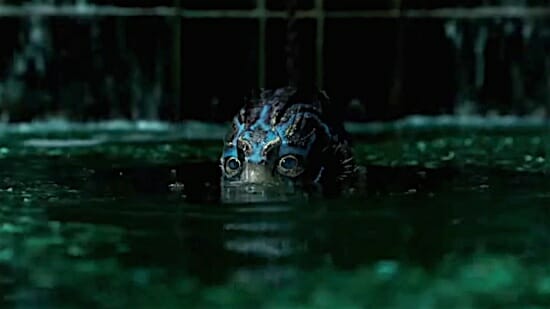
If there’s a waiting period filmmakers must abide before they can borrow from their own body of work, Guillermo del Toro either doesn’t know or doesn’t care. His latest, The Shape of Water, an ageless story of true love between a human woman and a fish-man, references his filmography both at and below surface levels: It suggests a riff on Abe Sapien, the psychic ichthyoid sidekick in both Hellboy films (who is himself a riff on Creature from the Black Lagoon’s Gill-man, fed through a copyright strainer by his creator, Mike Mignola), but directly invokes the structure and fairy tale trappings of his 2006 breakout picture, Pan’s Labyrinth. Del Toro has us set down in 1960s Baltimore, where Elisa Esposito (Sally Hawkins) works the janitorial night shift for the not-at-all-shady Occam Aerospace Research Center. She’s alone, mostly, except for her next door neighbor, Giles (Richard Jenkins), and her coworker and friend, Zelda (Octavia Spencer). Giles and Zelda give Elisa a voice she quite literally lacks: She’s mute, and spends most of the film communicating with sign language. Elisa’s clockwork days are disrupted by the arrival of the Asset (Doug Jones, the actor behind Abe Sapiens’ prosthetics), the aforementioned fish-man, in the custody of Colonel Strickland (Michael Shannon), at once the epitome of the del Toro villain and the average Shannon role: He’s abusive, violent, dictatorial to a fault, but mannered, the kind of bastard who thinks his dastardly bastard deeds are right and never thinks twice about his own morality. Elisa, ballsier than Strickland and basically every other man in the film, develops instant kinship with the creature. The success of their relationship hinges on performance as much as on direction. Del Toro cares about the well being of freaks and aberrations more than most people care about the well being of other actual people. Visually, The Shape of Water screams dieselpunk, signifying Bioshock more than the brothers Grimm, but the film bears the indelible stamp of folkloric mythmaking all the same. Del Toro weaves together his influences so finely, so delicately, that the product of his handiwork feels entirely new. That’s the magic of the movies, and, more importantly, the magic of del Toro. —Andy Crump
18. Birdman
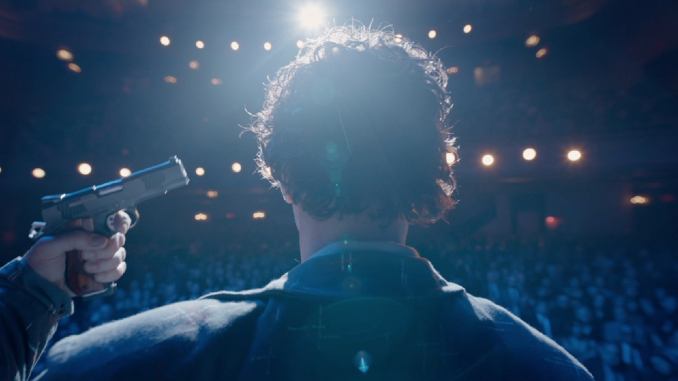
Riggan Thomson (Michael Keaton) used to be somebody. Specifically, he used to be Birdman, a once globally beloved superhero turned pathetic pop culture footnote 20 years after his relevance (and his fortune) has faded. Thompson influenced an entire niche of blockbusters; now, decades later, the poor sap just isn’t important anymore. Mexican director Alejandro González Iñárritu’s Birdman is about the rigors of celebrity; the transience of fame; the utter horseshit fakery of the drama world; artistic sacrifice; fatherhood; and about a million other themes all rolled into one fluid two-hour package. Above all else, though, Birdman is tender, raucously funny and deeply tragic. The final qualifier just proves that this is an Alejandro González Iñárritu film, but Iñárritu is operating on a new level here. This is intimate, personal stuff, perhaps his best effort since his first, 2000’s Amores Perros—or at least his most passionate, for more than just the director himself. The film at times reads like a dedication to Keaton’s work in Tim Burton’s Batman movies, and an admonition against the indulgent comic book rumpuses Thompson is supposed to have helped invent. There sure are a lot of pictures about caped crusaders out there, but don’t even the most over-the-hill superheroes deserve a chance to fly anew? —Andy Crump
17. Slumdog Millionaire
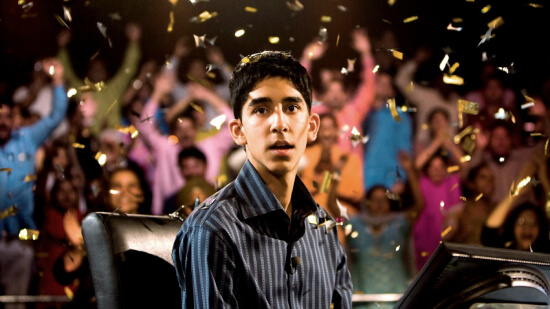
Propelled by a taut script from screenwriter Simon Beaufoy (The Full Monty), Slumdog Millionaire tells the story of Jamal (Dev Patel), an orphan from the slums of Mumbai who gets to the final round on the Indian version of Who Wants to Be a Millionaire? Certain that an uneducated tea server from the poorest class of society could never successfully answer so many questions without cheating, local authorities try to beat Jamal into a confession. Through a series of flashbacks, Jamal demonstrates how he’s learned the answers through his varied experiences growing up on the streets. Stylistically, Slumdog Millionaire explodes off the screen with a frenetic energy I haven’t seen since Fernando Meirelles’ City of God. Filmed on location in Mumbai, the film conveys the Indian city’s wondrous vibrancy. The city springs to life with throngs of people, rich colors, quick cuts, pulsating music, the specter of skyscrapers hovering over Asia’s largest slum, shaky cameras following kids running through the streets, and a story constantly cutting back and forth in time. Slumdog covers a lot of ground. Perhaps too much. It’s a Dickensian rags-to-riches tale with a romance at the center. It’s also a suspenseful, feel-good sports drama (the game show standing in as a sport). All the while, the flashbacks show Jamal, his brother Salim and Latika, his soon-to-be romantic obsession, dealing with extreme poverty, classism, corruption, genocide and child prostitution. While Boyle and Beaufoy want to address harsh reality, they clearly don’t want it to obscure the joy and vitality they’ve witnessed in the slums. This may seem like sugarcoating, a crowd-pleasing strategy to deliver a well-told tale with a happy ending but little substance. Yet ponderous independent filmmakers anxious to display “gritty reality” often ignore their characters’ multifaceted inner lives. Slumdog explores them—while Meirelles’ work may lend itself better to polemics, Boyle’s more holistic portrayal engenders better understanding. Slumdog Millionaire combines (and outdoes) the style and energy of Boyle’s Trainspotting with the tenderness, sentimentality and accessibility of his overlooked family film, Millions. In lesser hands, his new picture would’ve come across as a gimmicky, sentimental, conventional and superficial mess.—Tim Regan-Porter
16. The Hurt Locker
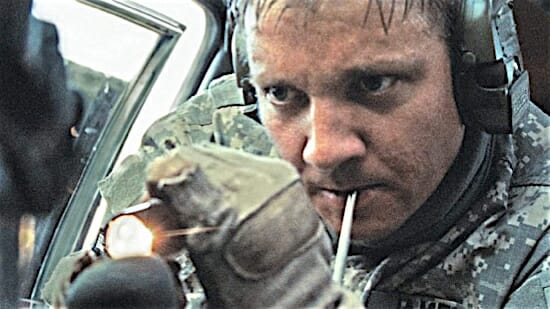
Kathryn Bigelow’s Zero Dark Thirty may have been more ambitious in its step-by-step chronicle of the efforts to find and kill Osama bin Laden, but her preceding War on Terror film, The Hurt Locker, remains the more resonant achievement. It’s essentially a character study in the guise of an action movie, with Bigelow’s subject Staff Sgt. William James (Jeremy Renner), a devil-may-care maverick who not only has a knack for disarming bombs, but loves doing it to a reckless degree. Beyond its hair-raising action and suspense set pieces, much of the film’s drama is driven by the tensions James’s hot-dog tendencies create between himself and everyone around him. But perhaps the film’s most noteworthy achievement lies in the way Bigelow uncannily inhabits James’s perspective while also standing outside of it. When, in its quiet epilogue, James finds himself immediately bored by suburban life and itches to return to the adrenalized theater of war, after nearly two hours of relentless nerve-wracking tension, we in the audience feel the same sense of stagnation he does. “War is a drug,” says journalist Chris Hedges in a quote that opens the film. In The Hurt Locker, Bigelow makes us understand that perspective in the most visceral way possible, to truly revelatory effect. —Kenji Fujishima
15. 12 Years a Slave

A film of historical significance, 12 Years a Slave is centered around a phenomenal performance from Chiwetel Ejiofor. His tears gently patting down on his daughter’s shoulder belie McQueen’s peerless ability to find rapturous power in moments of silence. But though 12 Years a Slave is McQueen’s most celebrated work, it is also his most conventional. Even the most ardent McQueen fan would fail to spot much of the director’s distinct creative perspective. With the hindsight of his future work, 12 Years feels a little brazen, ticking many of the boxes ascribed to “Oscar Bait.” Most uncomfortable are the accolades that Lupita Nyong’o received for this work; for all the pathos she brings to her feature film debut, it speaks volumes to Hollywood’s love of Black pain that this performance of relentless anguish, brutalization and rape is her best rewarded.—Leila Latif
14. Shakespeare in Love
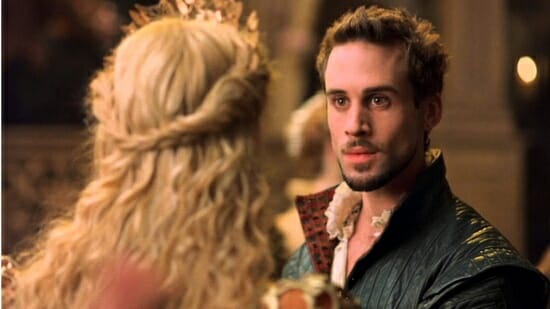
Shakespeare can be found throughout our list of the best rom-coms, as modern takes on his comedies abound, but Marc Norman and Tom Stoppard’s Oscar-winning original script puts the historical romance in romantic comedies, serving up a film that provides a rousing look at Elizabethan theater (and the characters who populated it) as it imagines the real inspiration for some of William Shakespeare’s early successes. Joseph Fiennes stars as the Bard and Gwyneth Paltrow as Viola de Lesseps in a film that is a treasure trove of references and mood for lovers of Shakespeare and of theater in general. (Its presentation of Romeo and Juliet is among the best film adaptations of the tragedy, even though it’s just in the background here.) But John Madden’s film is not just for Bardolators—the non-initiated will find the combination of Fiennes and Paltrow (and Geoffrey Rush, Colin Firth, Ben Affleck and Judi Dench) and this tale of star-crossed love both joyous and heart-wrenching. They might also decide this Shakespeare guy is worth checking out. —Michael Burgin
13. Million Dollar Baby

Clint Eastwood’s unforgettable foray into the boxing genre saw him also dipping his toe into near-classical tragedy. Hilary Swank is unforgettable as the hardy and determined Frankie, and the actress did intensive training to look and feel the part in the ring—even putting on 19 lbs. of muscle for the role. Eastwood’s turn as a washed-up old-time trainer, initially befuddled at the thought of training this scrappy female underdog, is equally great—eventually forming a father-daughter-like relationship with Frankie. It’s fair to say that with its sucker-punch of a conclusion, this is the boxing film most likely to make you cry into the credit sequence.–Christina Newland
12. Nomadland
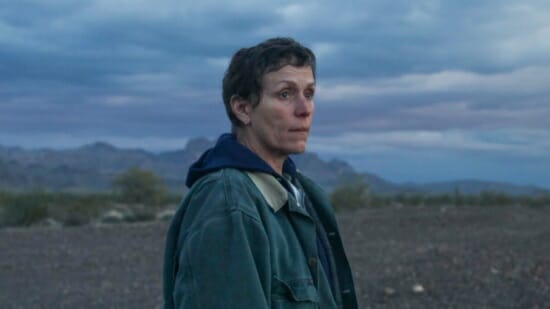
A devastating and profound look at the underside of the American Dream, Chloé Zhao’s Nomadland turns Jessica Bruder’s non-fiction book Nomadland: Surviving America in the Twenty-First Century (and some of its subjects) into a complex folk song about survival, pride and the beauty of getting by on the open road. Focusing on older Americans who’ve either abandoned or been forced from stationary traditional homes into vans and RVs, the film contemplates all that brought them to this point (an ugly, crammed Amazon warehouse looms large over the movie’s otherwise natural landscapes and sweeping vistas) and all that waits for them now that they’re here. Some of Bruder’s sources make appearances in the film, threatening to steal the show from the fictional Fern (Frances McDormand) at every turn—and McDormand turns in one of the best performances of the year. That’s just how honest and compelling Linda May and Swankie are. As the migrating community scatters to the wind and reconvenes wherever the seasonal jobs pop up, Zhao creates a complicated mosaic of barebones freedom. It’s the vast American landscape—a “marvelous backdrop of canyons, open deserts and purple-hued skies” as our Natalia Keogan put it—and that mythological American promise that you can fend for yourself out in it. But you can’t, not really. The bonds between the nomads is a stiff refutation of that individualistic idea, just as Amazon’s financial grip over them is a damnation of the corporation’s dominance. Things are rough—Fern’s fellow travelers tell campfire tales of suicide, cancer and other woes—but they’re making the best of it. At least they have a little more control out here. The optimism gained from a reclaimed sense of autonomy is lovely to behold (and crushing when it comes into conflict with those angling for a return to the way things were), even if its impermanence is inherent. Nomadland‘s majestic portrait puts a country’s ultimate failings, its corrupting poisons and those making the best of their position by blazing their own trail together on full display.–Jacob Oller
11. Titanic
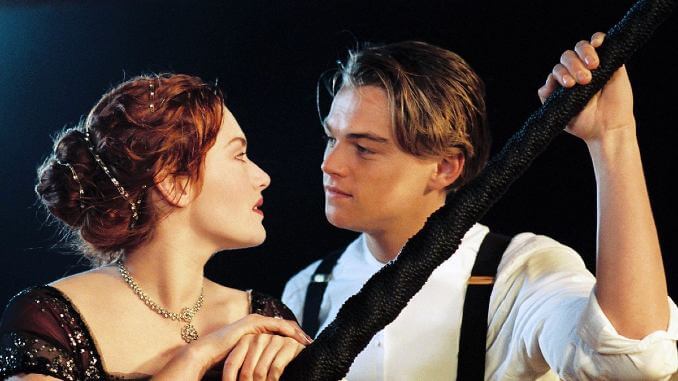
More than 20 years after its theatrical debut, James Cameron’s blockbuster epic is still so ubiquitous in the pop culture zeitgeist, its filmmaking marvels are drowned out by young Kate-and-Leo nostalgia and that damned Celine Dion caterwaul (not to mention James Horner’s iconic score). Cameron’s ear for dialogue may be woefully leaden, but he’s a shrewd storyteller, plunking a Romeo-and-Juliet redux aboard the doomed ocean liner and flanking the fictional romance with historical details, groundbreaking special effects and jaw-dropping visuals. The narrative lapses are at times dumbfounding—let’s face it, old Rose, who tosses a priceless artifact into the abyss after waxing ad nauseam about herself, is a thoughtless jerk—and the aforementioned dialogue is awful (to say nothing of Billy Zane doing his best mustache-twirling silent movie villain) but Titanic remains a painstaking testament to the all-in Hollywood spectacle.—Amanda Schurr
10. Unforgiven
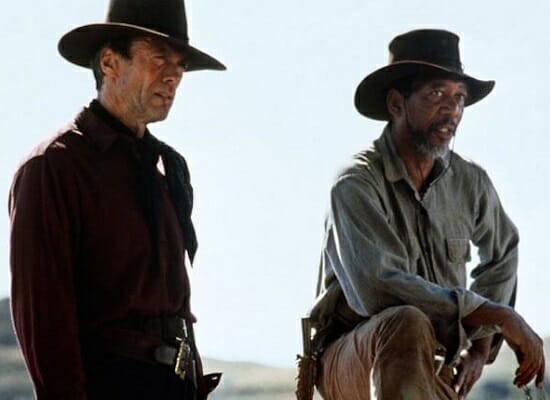
Director-actor Clint Eastwood’s Oscar-winning movie is a foreboding and troubling commentary on the Western genre as a whole, but specifically on Eastwood’s long, significant involvement with them. Eastwood began his career acting in the television series Rawhide, which aired in the late 1950s through the mid-’60s. In 1963, while still a relatively unknown actor, Eastwood journeyed to Europe to work with director Sergio Leone on the so-called Dollars trilogy, becoming a genuine international movie star in the process and making his mark on the genre in ways he never would on Rawhide. From then on, the Western and Eastwood would be synonymous with each other. Eastwood’s screen persona was forged in themes of vengeance, casual cynicism and flippant violence, albeit done with an exacting flair of style and visual wit that audiences had never seen before. Ironic onscreen psychopathy had a new face, and it was devilishly handsome. Unforgiven was atonement. In the movie, Eastwood plays an ex-gunslinger brought out of retirement to avenge the horrible rape and mutilation of a townie whore. Guns are strapped on, lead unleashed, honor brutally restored. But at what cost? It’s not Eastwood’s greatest Western, but it’s an insightful, powerful and self-reflexive examination of historical violence, the onscreen romanticizing of vengeance, and the shaping of Eastwood’s cinematic persona within the genre. —D.H.
9. Spotlight

Always a director who’s drawn great performances from his ensembles—we’ll set aside the disastrous The Cobbler for a moment—actor-turned-filmmaker Tom McCarthy has made his best drama since his first, 2003’s The Station Agent, with this stripped-down depiction of the Boston Globe’s 2001 investigation into the Catholic Church’s cover-up of sexual misconduct. Starring the likes of Michael Keaton, Rachel McAdams, Liev Schreiber and John Slattery, Spotlight is about nothing more than watching smart, passionate reporters do their job, digging into a story and using their savvy and moxie to bring it to the world. The cast lets its characters’ jobs fill in the backstory of their lives, and in the process Spotlight does what Zodiac, The Insider and All the President’s Men did before it: let us appreciate the difficulty and rigor required for good journalism. Special kudos to best-in-show Mark Ruffalo as Michael Rezendes, a ruthless bloodhound of an investigative reporter who may inspire a lot of impressionable high school juniors in the audience to take up the profession.—Tim Grierson
8. Moonlight
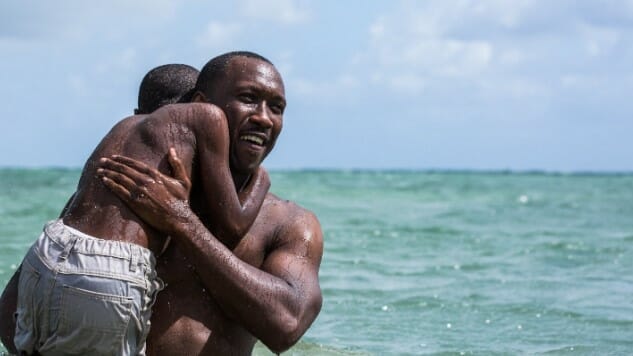
What’s remarkable about Barry Jenkins’ Moonlight is that it’s hardly remarkable at all. It’s actually mundane, though its mundanity can be mitigated—or, really, delineated—via qualifiers: buoyant, bitter, graceful, beautiful, harsh, coltish, doleful, vibrant. More to the point: Moonlight is familiar. If you strip away its exterior particulars, you’ll be left with the bones of a coming-of-age story. Every film has a skeleton to support its musculature. Moonlight’s just happens to look like Boyhood’s and The 400 Blows’. Moonlight is painted with brushstrokes of silence: of Jenkins’ unobtrusive direction, of Chiron’s mute trepidation, of his friends and caregivers, who speak to him in the knowledge that he’ll say little and less to them in return (if he says anything at all). But rather than make Moonlight inaccessible, silence opens it up. In film, silence is neither mortal nor venial sin—it’s actually a virtue. Jenkins is fluent in silence and possesses an innate understanding of how silent moments can communicate more than heaps of dialogue. It’s in glances that pass between Little and his surrogate custodians, Juan (Mahershala Ali, damn near ubiquitous in 2016 and at his best here) and Teresa (Janelle Monáe), the stillness Chiron responds with when in conversation with his chum-then-crush, Kevin. Moonlight is nothing if not empathetic. But describing the film solely in terms of empathy is a misguided oversimplification: All movies seek out empathy to degrees, after all, and so Moonlight does what any human story on celluloid has to do. Jenkins opts for sensation in favor of the sensational, eschewing flash and bluster while making old hat feel new again. Most of all, he invites our empathy at the cost of our vanity. He leads us away from navel-gazing to see the stunningly constructed drama he and his troupe have laid before us on screen. The film encourages self-reflection, but not at the expense of either its narrative or the viewing experience. That’s the surest sign of a deft cinematic hand. —Andy Crump
7. Oppenheimer
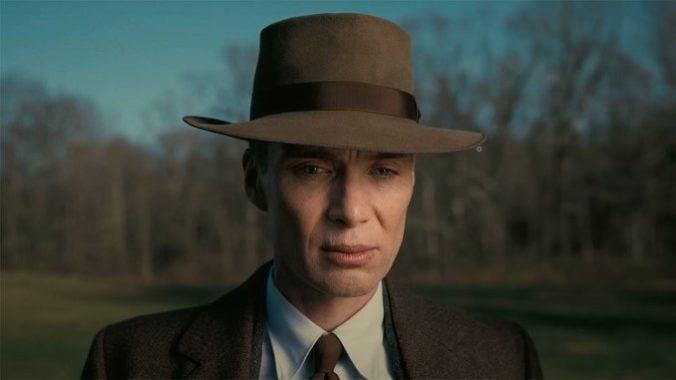
For a visionary director of big-budget, big-studio, big-idea sci-fi/fantasy movies, Christopher Nolan has often seemed, if not exactly at war with himself, somehow prone to both methodically ascending his big, obvious building blocks and attempting to take wilder, more ambitious leaps. The real test of Nolan’s mettle is something like the great-man biopic – not because he’s insufficiently reverent (or dad-ish in his WWII-era interests), but because of the temptation to give himself fully to that innate squareness. Is the guy who evoked terrorism, the surveillance state, and Occupy Wall Street in service of Batman-movie plot points really up for a nuanced exploration of the legacy of J. Robert Oppenheimer, father of the atomic bomb? Yes and no. Nolan’s Oppenheimer isn’t so much a great-man biopic as a great-man-but-maybe-not biopic, and at times, the writer-director seems hell-bent on channeling the instinctive, ethereal ambivalence of a Terrence Malick trip. It’s a fascinating spectacle in large part because Nolan isn’t especially Malickian at all (though at least that frame of reference might temporarily ease the overworked, underbaked Kubrick comparisons). Throughout the film, especially as it builds during its first hour, theoretical physicist Oppenheimer (Cillian Murphy) is beset by cutaway visions of stars, waves, and eventually all-consuming fire, fragments of zoomed-in science, blown up to eye-dazzling, seat-rattling IMAX scale. Half the movie feels like a montage and three-quarters of it feels like a thriller; the clandestine elements of the Manhattan Project and the talk of Soviet spies give the movie a feeling of buttoned-up espionage. A showcase piece, of course, is the first atomic bomb test, where bits of nervous comic relief pop up until the blast drops out Nolan’s usually-booming sound mix, leaving only the sound of breathing for a minute or two. It’s an awe-inspiring and discomfiting climax that hurtles Oppenheimer out of his preferred theoretical realm and into a void of reality. As much peripheral stargazing as the movie offers, it’s more interested in wrapping its mind around a 20th century horror that is, for many Americans, both abstract and intensely nightmarish. There is a clenched, impacted sadness to this semi-opaque figure who spearheads the creation of a bomb whose purpose is all too scrutable in the broader historical view. It might seem reductive to relate Oppenheimer’s merging of theoretical physics and practical project management to the way Nolan balances indelible images with practicality, creating an unlikely workmanlike poetry. It does explain, though, where some of that poetry comes from, and why even some of the movie’s more obvious points are able to shake up the audience, not just the premium-large-format multiplex seats. Nolan-via-Oppenheimer offers an explanation for this early in the movie, talking about his chosen field: “It’s paradoxical, and yet it works”—Jesse Hassenger
6. The Departed
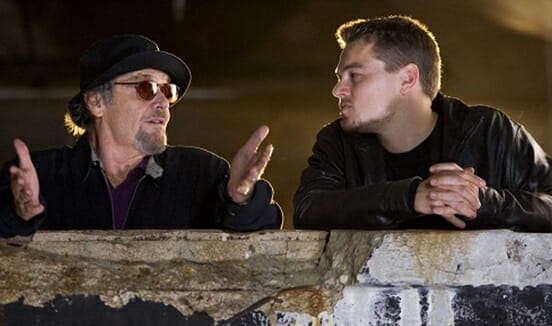
Andrew Lau and Alan Mak’s tormented undercover epic Infernal Affairs offered Martin Scorsese the perfect opportunity to inject Catholic guilt and an unstable post-9/11 national identity into two of the warring yet intertwined forces that define America: Cops who run on Dunkin’ and robbers who run the Dunkin’. His remake, The Departed, saw William Monahan adapt Hong Kong’s gangland to Boston and replace the original film’s crisp aloofness with white-knuckle tension. A cop, embedded in a gang. A gangster, hiding in the police force. Both trying to sniff the other out. It’s an overtly accessible film from Scorsese (he joked at that year’s Directors Guild Awards that he was collecting trophies with The Departed because “This is the first movie I’ve done with a plot”) and its nimble cat-and-cat chase is elevated by fantastic performances, playful images and that one inescapable Dropkick Murphys song. Jack Nicholson’s gang boss gobbles up his surroundings like they’re supplemental income streams, while Leonardo DiCaprio and Matt Damon try to out-anxiety one another as doomed pawns in a lucrative game. Their ideals and ambitions fall to in-fighting, to systemic flaws, to everything misguided about youth. They go through life suffering for something bigger than themselves, something that got lost almost immediately after they began pursuing it. The pursuit of money, of justice — these can be your religion. The Departed is a great gangster thriller, but it’s also great Scorsese, just as involved with the practical traps and schemes as with the existential vise its men are caught in.–Jacob Oller
5. Parasite
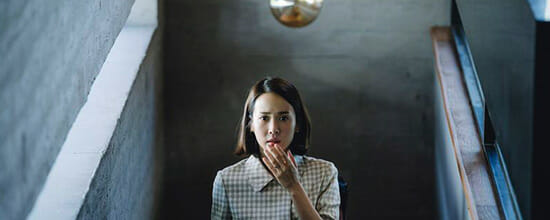
“That’s so metaphorical,” exclaims the son of the Kim family, Ki-woo (Choi Woo-shik), holding with childlike reverie a large rock sculpture, a wooden base solidifying its aesthetic and cultural value. The pointedly nice object stands apart from the basic keepsakes in the Kims’ fairly dingy and cramped home, inhabited by unemployed driver father, Ki-taek (Song Kang-ho), unemployed mother, Chung-sook (Jang Hye-jin), and not-in-art-school daughter, Ki-jeong (Park So-dam). Brought to them by Ki-woo’s wealthy friend, the rock is supposed to foretell great financial wealth to whatever family keeps it in their home. Irritated at their own situation, at the lack of space, at the lack of immediate value the rock has, Chung-sook mutters, “Could’ve brought us food.” In Bong Joon-ho’s Parasite, those that live with a stark awareness of inequality operate with a sense of cognitive dissonance. It’s this paradox of thought that allows Ki-woo to be both naively worshipful towards what a rock sculpture could bring them, but also understand, at other times, that wandering around isn’t how one ascends into power. At the behest of said wealthy friend, he becomes the English tutor for the daughter, Da-hye (Jung Ji-so), of the grotesquely affluent Park family: astute patriarch (Lee Sun-kyun), dim matriarch (Cho Yeo-jeong), manic artsy son, Da-song (Jung Hyun-joon), and severely loyal housekeeper, Moon-gwang (Lee Jung-eun). But as the Kim and Park families grow increasingly closer, both the differences and similarities between them blur beyond discernment. Bong’s interest in income inequality and class has spanned the majority of his career, examining the ways it impacts the justice system (Memories of Murder, Mother), the environment (Okja) and the institutions responsible for both the exacerbation of wealth inequality and failing to protect those most marginalized by that inequality (Snowpiercer, The Host). For Parasite, Bong takes a slightly different angle—he’s no less interested in inequality’s consequences, but here he sees how class as performance manifests, particularly when people are plucked from one echelon of society and put in another. As we watch both families act in different, but intersecting, pieces of social/anthropological theatre, Bong cuts through their mutual hunger, and what ultimately and tragically separates them, with a jaundiced eye and an acidic sense of humor. Laughing during Parasite feels like choking on rust. (Cho, especially, finds the perfect amount of absurdity as the somewhat doltish mother, truly a testament to rich ladies being easily knocked over by a feather.) But Bong is not interested in metaphor, and not the kind written on rocks. Even through its absurdist, bleakly satirical lens, Bong understands that social inequity is not just theatre, but lived experience. Sometimes the rock is just a shit-stained rock. —Kyle Turner
4. The Lord of the Rings: Return of the King
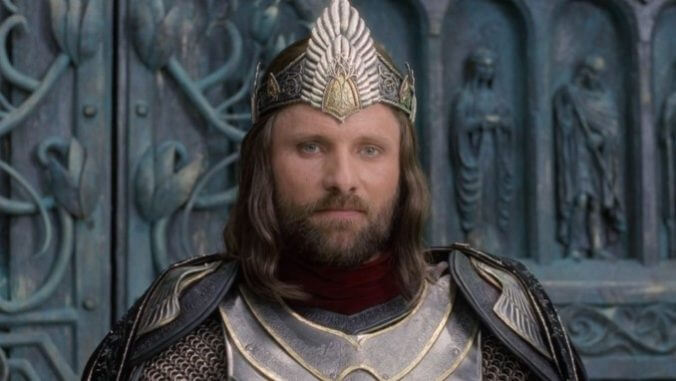
There’s a now-famous story about the ending of The Lord of the Rings: The Return of the King that sums up the response to the film just after its debut in December 2003. According to Elijah Wood, Frodo Baggins himself, he was backstage at an awards show just weeks after the film arrived, when he was met by none other than Jack Nicholson, who asked him what happened at the end of the film. Wood, thinking Nicholson was asking for his personal interpretation of Frodo’s final scene, offered his thoughts, only to be interrupted by Jack, who declared that he’d missed all of the character’s goodbyes and gone out to the car before the credits rolled, because the film “just wouldn’t end.” The Return of the King, of course, went on to win 11 Academy Awards, including Best Picture, sharing the record also held by Ben Hur and Titanic for most wins by a single film. Then as now, it’s considered the crowning achievement of one of the greatest feats of cinematic storytelling in the last 25 years, a moving and invigorating epic in every sense of the word. But if you were around for the film’s reception in 2003, you know that even amid the rapturous celebration, there were jokes about the ending, grumbles that the film just went on too long, tried to do too much with its final scenes. Yet The Return of the King‘s expansive ending is not only the perfect conclusion to this story, but a perfect counterpoint to years of plot-obsessed, continuity-driven storytelling in genre franchises. As he prepares to leave Middle-earth, Frodo finishes his handwritten narrative of the war, then turns to Sam and says “There’s room for a little more” in the book. It’s not a subtle message, and if you watch behind-the-scenes footage of the making of the film, you can see that it’s made even less subtle by Jackson’s decision to shoot Frodo’s dialogue in that scene at the very end of principal photography. Jackson prompts Wood for take after take, try after try, seemingly unwilling to let the film go, until he finally collapses into his star’s arms, sobbing as filming wraps. The point here, is that as Tolkien himself would say, “The Road goes ever on and on.” There are no endings, not really. There is only the moment we look away, call cut, sob in each other’s arms when we’re finally willing to let go. For all its great length, for all the jokes we make about its many conclusions, The Return of the King still doesn’t provide complete and utter closure. We don’t get neat endings for every character. We don’t get to see what awaits Frodo in the light of the West. We don’t get to know what Sam will do with those empty pages in the book. The ending is invigorating and vast, and yet there’s still something missing. But that’s what makes it beautiful, and heartbreaking, and keeps us coming back to these films every single year with a reverence that matches Jackson’s own. For all its epic scope and sweeping narrative, The Return of the King manages to go out with a few things left unsaid.—Matthew Jackson
3. No Country For Old Men
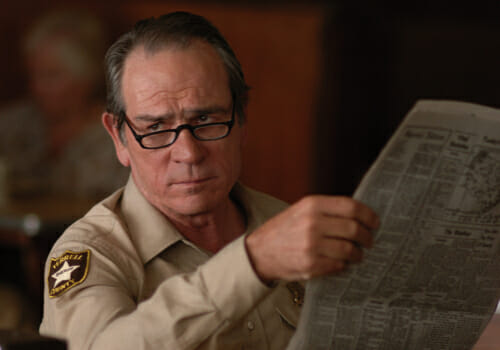
What is it about the Coen Brothers’ inconsolable No Country for Old Men that still chills the blood, even under the South Texas sun? No doubt its inscrutability plays a role: Is it a Western, a noir or a morality play? And the Academy Award-winning performance by Javier Bardem disturbs because he himself remains a mystery: Is Anton Chigurh a merciless hitman or the Angel of Death? The story of a drug deal gone wrong soon reveals its true theme: the futility of being good and just in the face of abject evil. But the Coens also meditate on the faltering of the physical body. “Age’ll flatten a man,” Tommy Lee Jones’ Sheriff Bell esteems, and for this Texan, the evocation of my childhood landscape—right down to the tiniest detail—means that the specter of Chigurh will haunt not only the end of my life but stomp through its earliest remembrances as well.—Andy Beta
2. The Silence of the Lambs
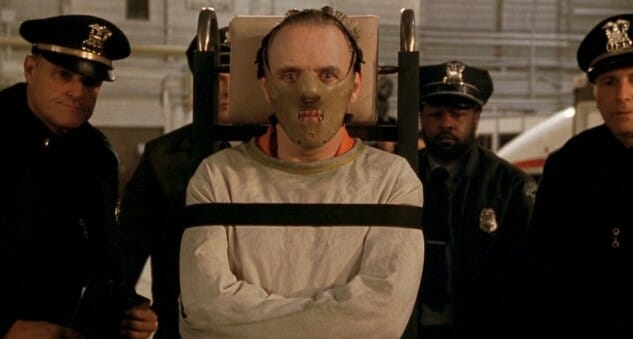
In the face of grotesque sequels, lesser prequels and numerous parodies, The Silence of the Lambs still stands as a cinematic work of art among crime dramas and serial killer movies, winning the five gold rings of Oscar-dom (Best Picture, Director, Actor, Actress and Screenplay). Anthony Hopkins’ portrayal of the murderous Hannibal Lecter especially proves the worth of surrounding one of cinema’s greatest thespians with a stellar supporting team, though director Jonathan Demme deftly wields the brush of that talent to bring audiences into the dark, sadistic world of Dr. Lecter while leaving them gasping at the twists and turns of novelist Thomas Harris’ gruesomely wonderful story. As happens with all great films, second and third viewings fail to diminish the ride, but instead reveal even more subtleties of characterization. And Demme’s own style behind the camera makes the close-up world of Silence of the Lambs an unforgettable visual parlor of grotesqueries. —Tim Basham
1. Schindler’s List
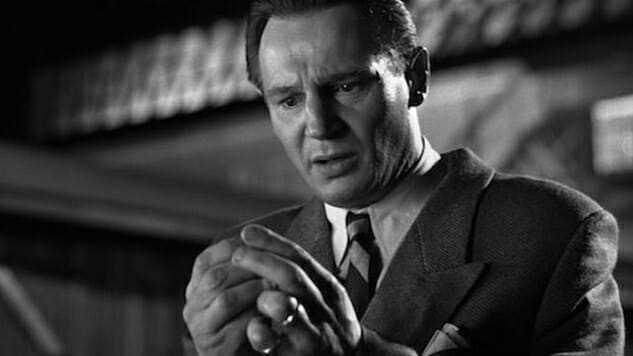
It’d be hard to find a more inspiring, moving story to tell than that of Oskar Schindler, and in doing so, Spielberg produced one of the most ambitious, wise and moving motion pictures of our lifetime. The acting is superb—a career-making role for big lumbering Liam Neeson, so carefree and cocky at the beginning, so concerned and determined in the middle, and so noble and humble at the end of the film. Ralph Fiennes and Ben Kingsley are perfect in supporting roles. A host of unknowns give everything in their one moment on the screen. John Williams’ haunting score and Janusz Kaminski’s breathtaking black-and-white cinematography sparkle. But the script—oh, Steven Zaillian’s majestic script—is the biggest star. He manages to take a Holocaust tale and turn it into a story of triumph, the story of how much one man can do, and the regret we’ll each someday have that we didn’t do much, much more. Oskar’s “I could have gotten more out” speech is almost too much to bear. —Michael Dunaway